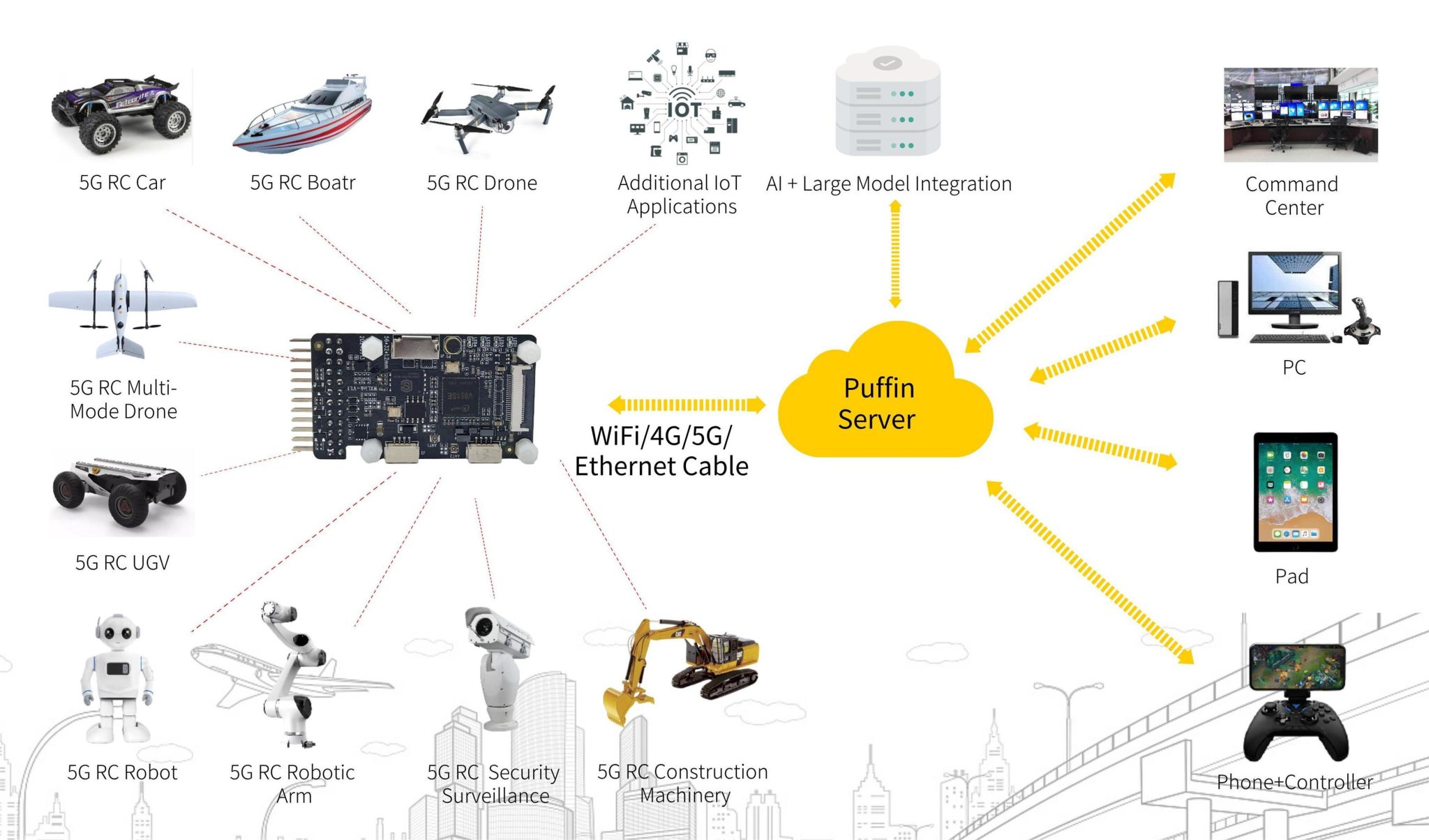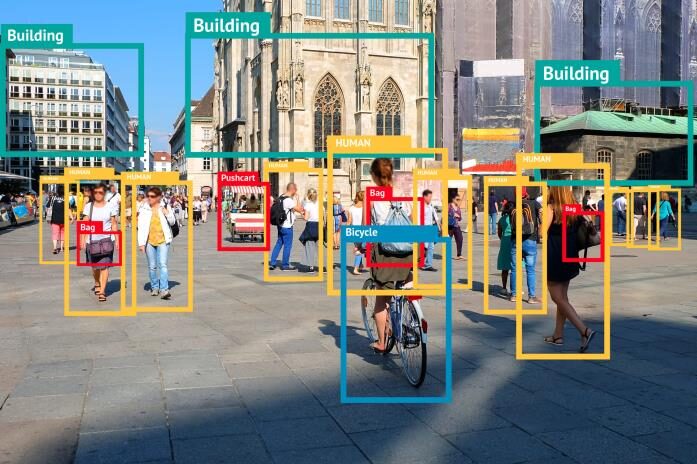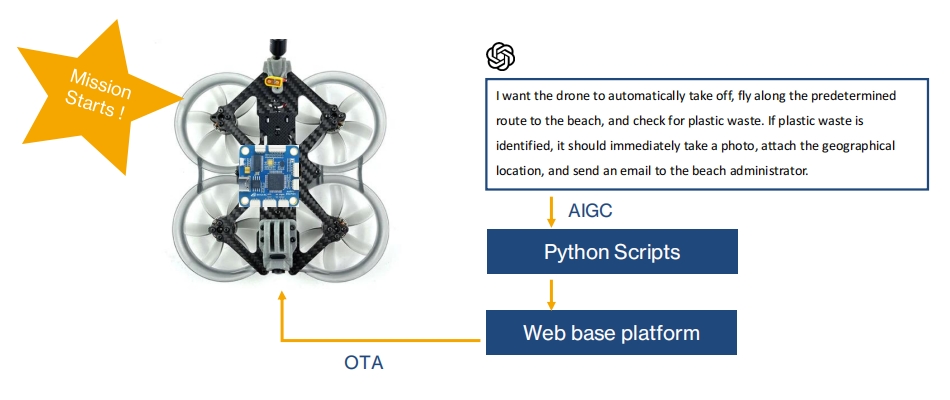Empower Robotics with AI and Connectivity
Puffin—AI-powered teleconnect IoT module
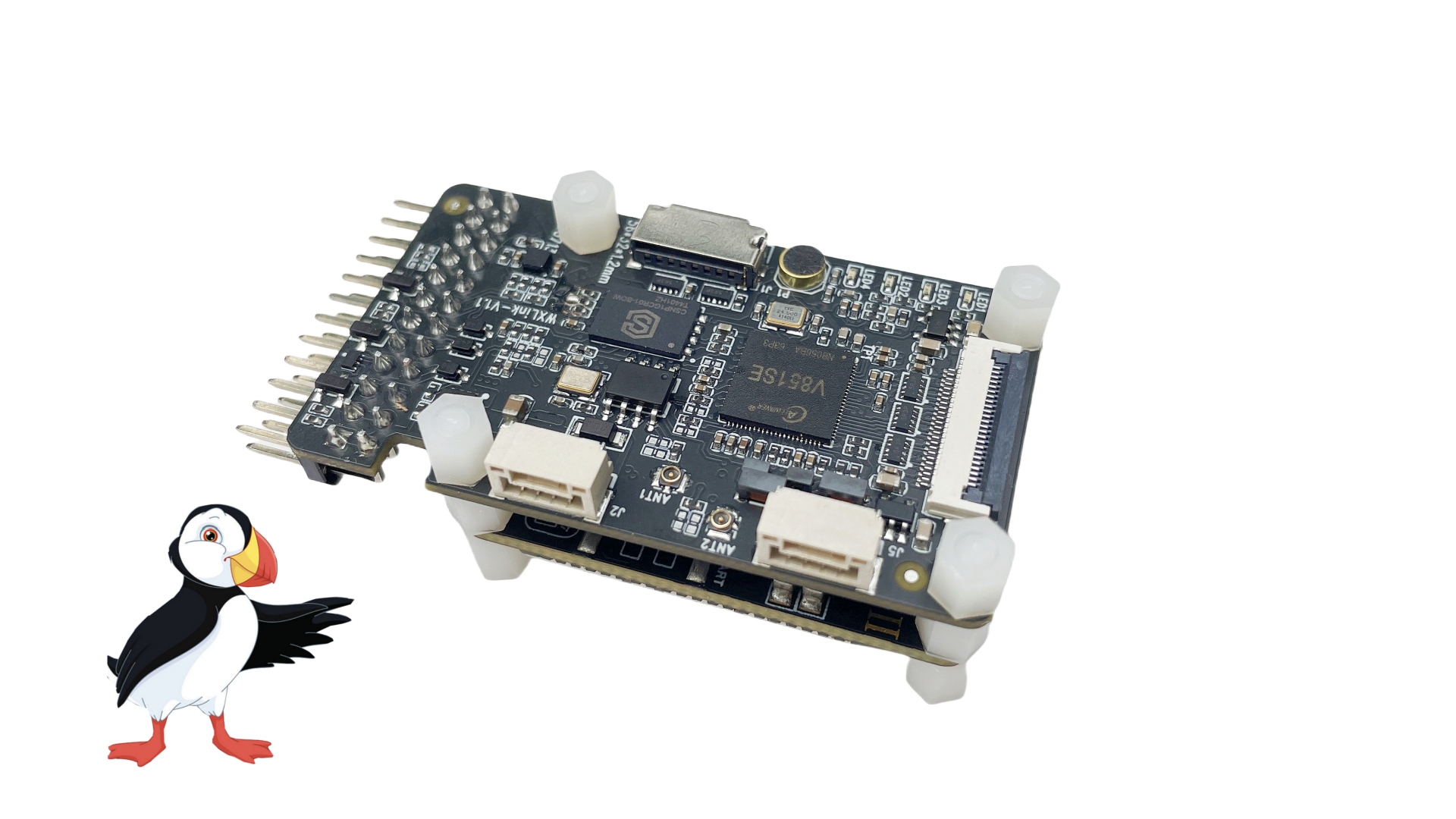
Teleoperation
Drones Vehicles Robotics
Video/Audition Transmission
Telepresence Video Conferencing
Connectivity
Sensor Data Transmission
AI
Object Detection Autonomous Planning
Telemetry
Sensor Data Transmission

Learn about Puffin's Kickstarter project!
Learn More
Find out what we're up to on facebook
Learn More
Discover our product videos on Youtube!
Learn MoreProduct Features
Proprietary VTX algorithm achieve remote video transmission and control with latency under 100ms.
Enhanced 4G/5G communication capabilities optimized for weak network conditions, featuring automatic reconnection after disconnection and direct public network transmission.
Compact design (61X31X20mm) . Average power consumption under 1W.
Supports SPI, I2C, UART, PWM, and GPIO connections, seamless integration with various external devices and sensors. Provides multiple power output options, including 3.3V, 5V, and 12V, to meet diverse application needs.

Supports PC, MAC, iOS, Android devices, cloud applications, and cross-platform Web support for all OS and hardware platforms.
User-friendly interface, simple setup and configuration. Modular architecture allows for quick and seamless integration. Extensive documentation and support.
Rich image recognition library: face, license plate, and autonomous driving.
Includes a rich library of artificial intelligence functions, such as facial recognition, license plate recognition, speech recognition, and more.
Software Advantages
Powerful AI Integration
Computer Vision(CV) Natural Language Processing (NLP)
Precise Remote Control
Cross-Platform IOS Android PC Mac
Fast and Stable Connection
4G/5G VTX Ultra-Low Latency
Diverse Development Platforms
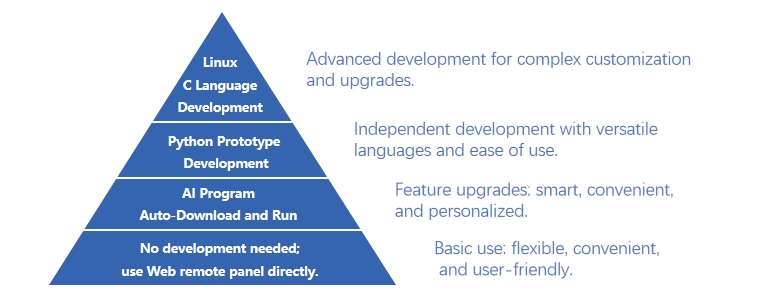
Hardware Connection Diagram
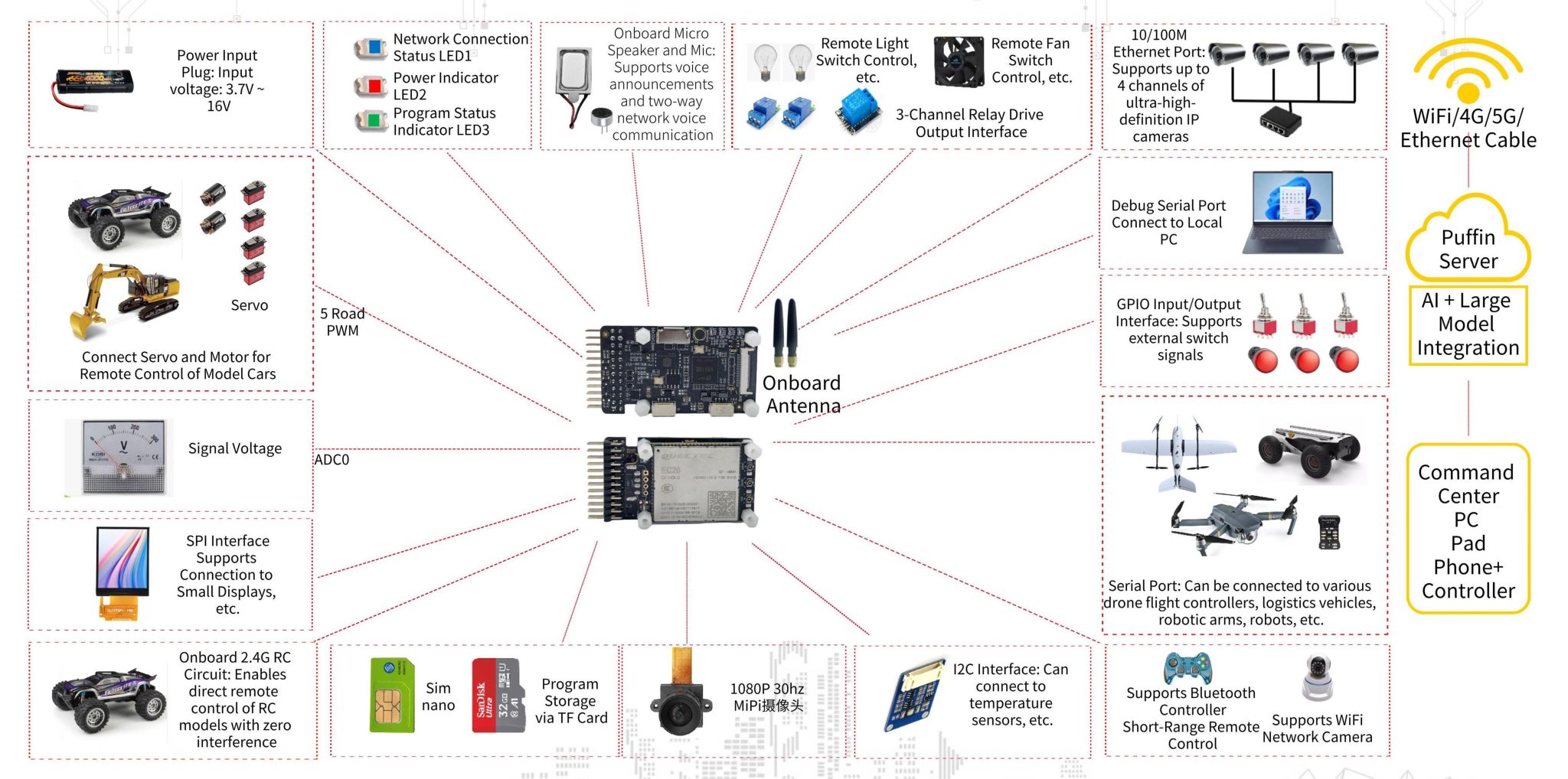
Specifications
|
Specifications
|
Content
|
|---|---|
|
Specifications Content CPU/NPU Memory
|
V853 integrates dual CPUs of Arm Cortex-A7 and RISC-V E907, with a built-in NPU with a maximum computing power of 1T and a clock frequency of up to 800MHz. The NPU supports up to 0.2TOPS. Integrated SIP (System in Package) 64MB DDR2
|
|
Communication Capabilities
|
Supports 5G (SA/NSA) and 4G, with full network compatibility for major operators and broadcast frequencies: N41/N78/N79/N1/N28, LTE-FDD, LTE-TDD.
|
|
Operating System/Development Languages
|
Maix-Linux, with integrated Python 3.8.5, C/C++, and Python.
|
|
Bootloader, Debug Interface
|
Default TF card, optional SPI Flash. Debug interface: CPU UART.
|
|
Power Voltage, Power Consumption
|
5V~28V, 0.8W (idle), 8W (full load).
|
|
Operating Temperature
|
0~65°C, temperature rise <30K
|
|
Video Capabilities
|
MiPi Camera: 1080P @ 30Hz, H.264/H.265 encoding. Network Camera: Up to 4K @ 60Hz, supports up to 4 channels of 1080P
|
|
Audio Capabilities
|
Onboard mono microphone, onboard 0.5W mini speaker.
|
|
Physical Parameters
|
613120mm, weighing 35 grams.
|
|
Wireless and Network Capabilities
|
5G, 4G, WiFi 5, 100M Ethernet, BT 5.0, 2.4G
|
|
Onboard Sensors
|
G sensor ,GPS sensor
|
|
Expansion Interfaces
|
Serial, I2C, SPI, PWM, GPIO, 12V relay, 5V relay, 3.3V, 5V, 12V power outputs
|
|
Software Capabilities
|
Web environment with all interfaces and onboard functions ready to use.
|
Hardware Interfaces, Dimensions, and Pin Definitions
Hardware Interfaces

Hardware Interfaces
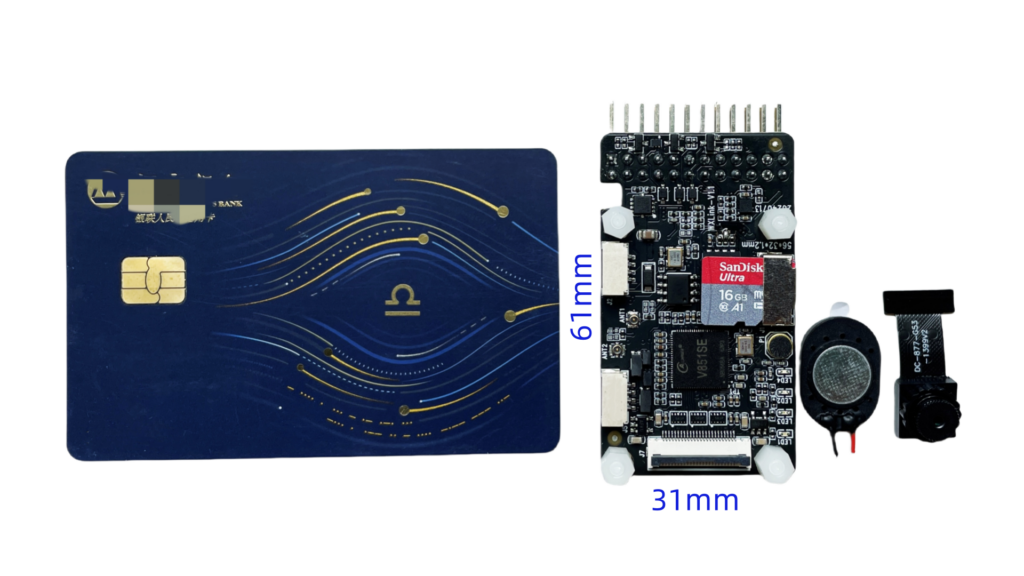
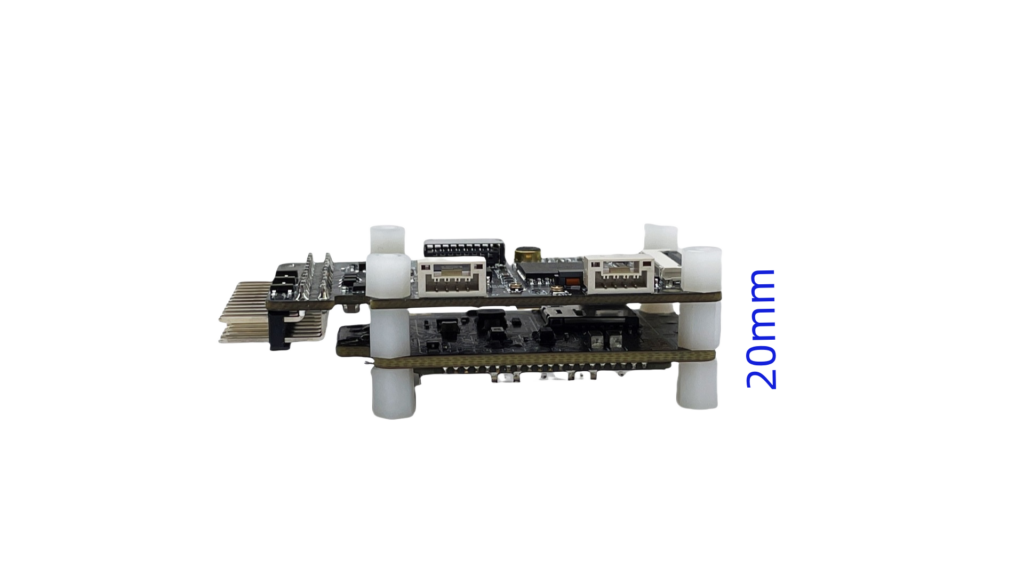
Hardware Interfaces
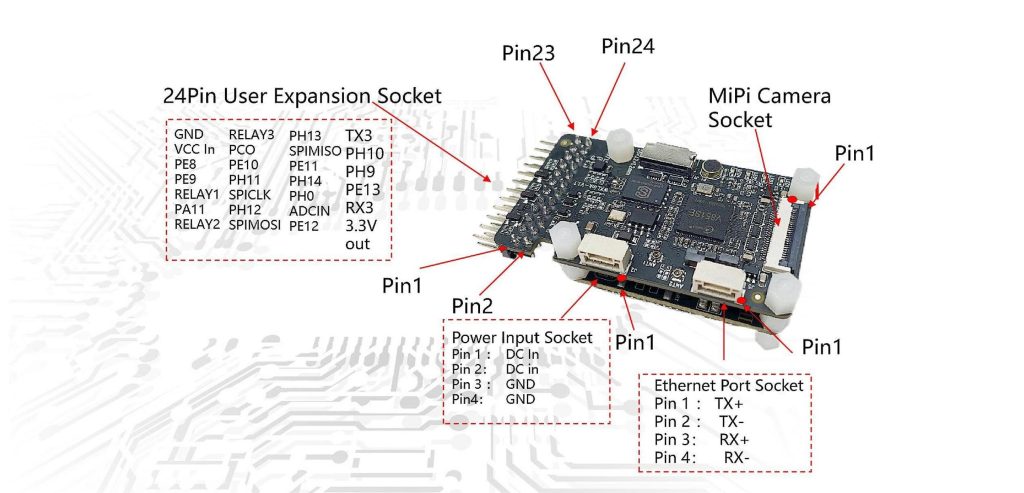
Hardware Interfaces
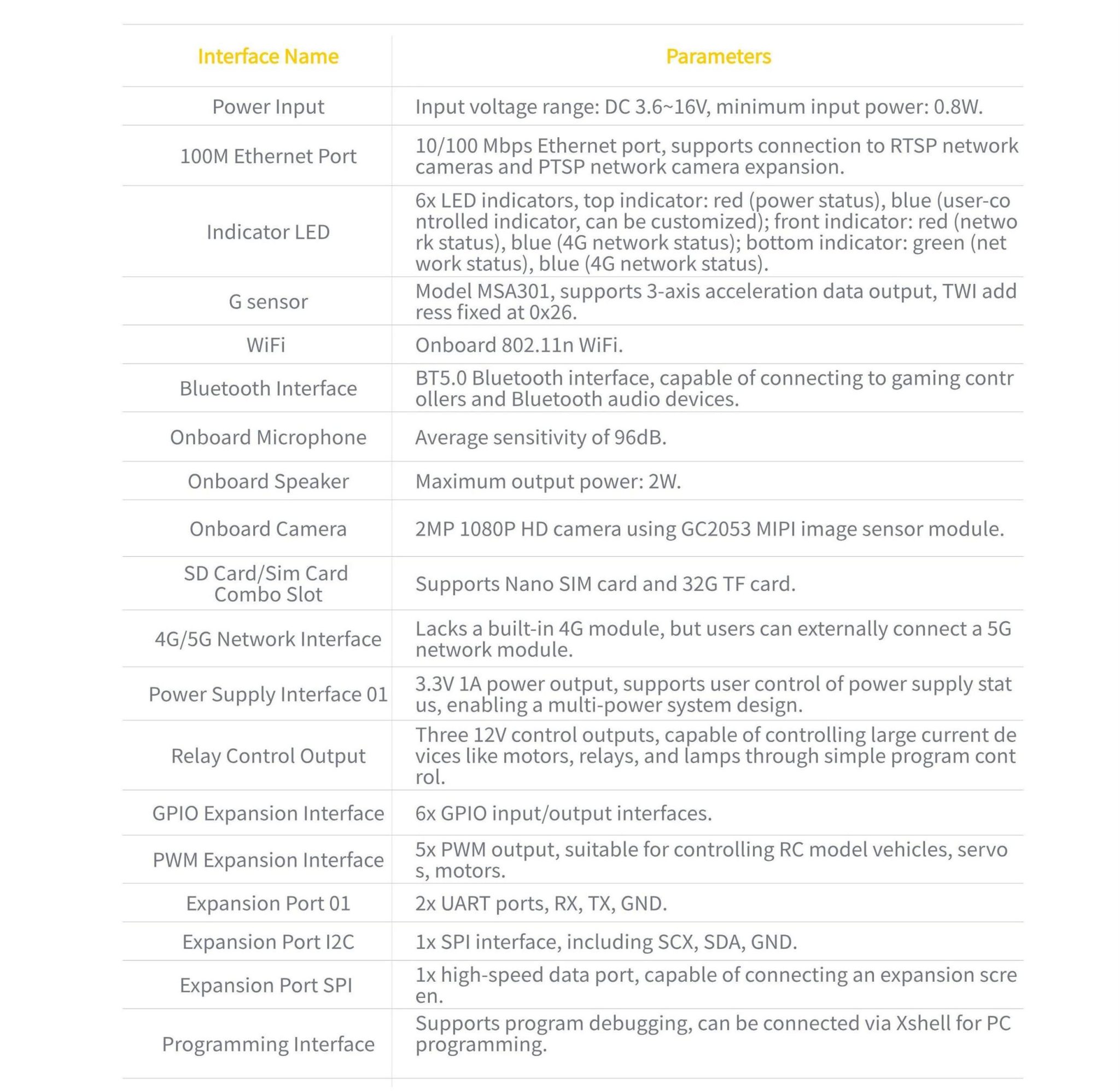
Product Applications
Once Puffin AIoT is physically connected to traditional devices through hardware interfaces, the module's network system automatically connects to the Puffin cloud server's signaling system. Puffin provides a comprehensive ecosystem of embedded software, web software, server software, demo software, real-world use cases, and development environments. This ecosystem ensures that users of varying skill levels can efficiently create their prototypes, build their systems, and scale up to mass production, thereby achieving economic benefits in the most suitable way.
